To quote the greatest political mind of our generation, “Honestly, I am dumb. Most of the time I’m just playing smart.”
I am the Son of Sam Seaborn.
* This is an excerpt from last cycle’s “SON OF SAM SEABORN: The Eagerly Awaited ‘Big Think’ Deck,” which, I’d like to believe, is still worth checking out (especially if you’re a political strategist)
***
“I am a lawyer and a speechwriter. I argue for a living, and I’m sought after because I’m good at it.” — Sam Seaborn, “Post Hoc, Ergo Propter Hoc”
Holy schnikes, I think we might actually get a presidential debate.
If so, I have a few pieces of advice for JRB that will be applicable no matter the situation…
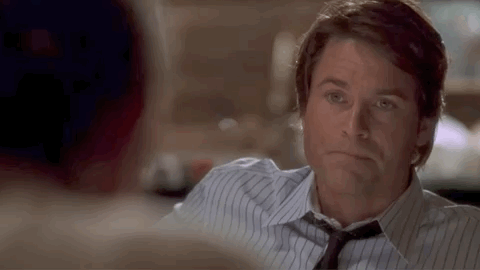
Get Your GIF On
Because if an image is worth a thousands words, a 5-second GIF composed of hundreds of images is worth…significantly more than that.
In 2016, C-SPAN broadcasted the entire Clinton/Trump debate in split-screen, with a few other networks doing the same; meaning that every single word Trump said was an opportunity for Hillary to react and land a visual jab. I have no reason to believe there won’t be the same split-screen setup this year (and if there currently isn’t, argue for it).
Trust in the Second Screen Experience
Because most people, especially those who will inevitably end up “shaping the narrative” of the debate, will most likely be looking at Twitter/Threads the entire time. However, this means going far beyond simply relying on the “we’re immediately tweeting out a great prewritten quote that just happened” move.
Personally, I’d create a dedicated Team Biden @DebateFactChecker type of account that calls out Trump’s various lies in real time.
It might even be worth incorporating the ridiculously unexploited app Momentum, which allows one to donate to a thematically appropriate charity whenever triggered by a certain kind of event. You could, say, create a rule to donate a dollar to the Biden campaign (et al.) every time Trump says [insert word].
Obviously, the possibilities here are endless. If I had my druthers though, I would put together a word cloud of the roughly 14 words/phrases Trump uses to describe all things and set it up so that anytime he, for instance, called something “truly amazing,” he would effectively be donating to his opponent.
And if I were feeling crazy, I’d have an outside group create a Democratic @DebateDrinkingGame type account that used puckish revelry to highlight every time, for example, Trump refuses to accept intelligence from his own national security experts. These kinds of patriotic binge drinking events already end up happening organically, but there’s an opportunity for the Democrats to invite everyone imbibing to one “big tent” party, thus keeping them engaged and enthused.
Know your blocking
Because the most lasting image of the 2016 debate was this:
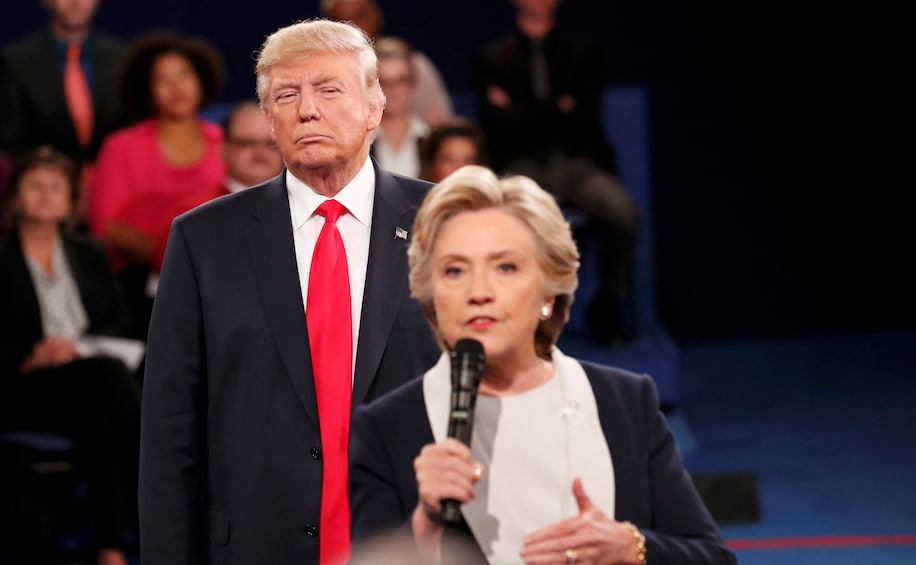
“Instead of retreating to another side of the stage like most candidates would when she talked, the hulking reality TV star hovered a few feet behind her, glowering as she spoke, like a lurking masher” — which played right into Hillary’s hands.
Yes, Trump decided “lurking masher” was a good idea. But the Clintons have been setting up their debate opponents for visual failure ever since 1992, when a young Governor Bill Clinton first pitched the novel idea of a “presidential town hall debate” to the incumbent George H.W. Bush.
You might remember that election-altering event for this famous debate moment, when Bill Clinton connected with a young woman in a way the incumbent seemed physically incapable of doing:
At the 2:47 mark of the above video, just as Clinton is getting to the “with people like you, all over America” part, the camera angle even switches to a fortuitous shot from a lucky cameraman perched right over the audience member’s shoulder — making it seem like we’re right there with them:
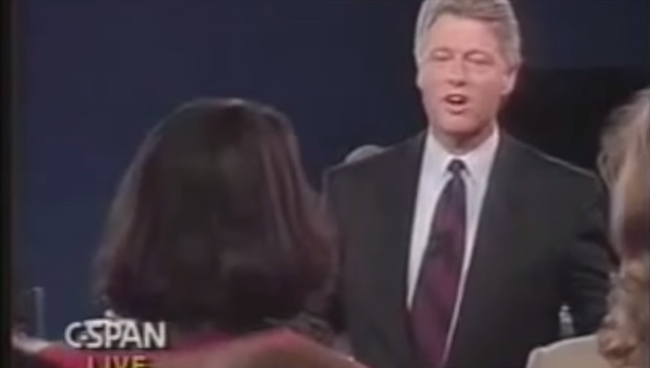
Except, as one former Gotham District Attorney will tell you, we make our own luck.
Part of Bill Clinton’s debate prep for this “first-of-its kind” town hall actually involved his campaign laying out a grid on their replica stage, with fake cameras and body doubles positioned to teach the candidate how to best use the space when giving his various answers.
And this bit of debate kabuki wasn’t just about Clinton making himself look good, it was also about making his opponent(s) look bad:
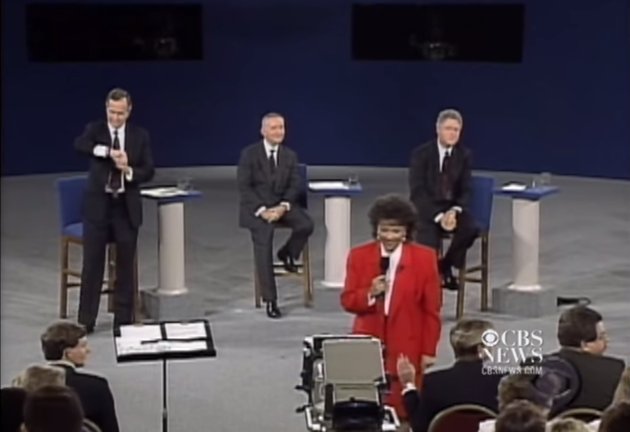
When Bush got caught checking his watch, it was the perfect visual encapsulation of Clinton’s not-so-secret message that the President didn’t care about the average American. In fact, the history books (and John Dickerson’s fantastic Whistlestop podcast) suggest this once-innocuous town hall debate was the death blow to a limping Bush campaign.
For Biden, this might mean having him “spontaneously” move from behind the podium and walk a few steps towards Trump in a “fit of righteous passion” to make a specific point that needs acute attention, or even just to shut Trump up. Because he was empathizing “with people like you, all over America” who need
Imagine a shot of Biden doing essentially the “hold me back” move, gleaming in moral patriotism, an American flag placed conspicuously behind him.
You’ve just made the front page of every major news outlet.
***
I may be blind in one eye, but one doesn’t need depth perception to perceive which way the wind is blowing this election season.
I’m less visually observant than others, but I make up for it with cunning and guile.
— Sam Seaborn

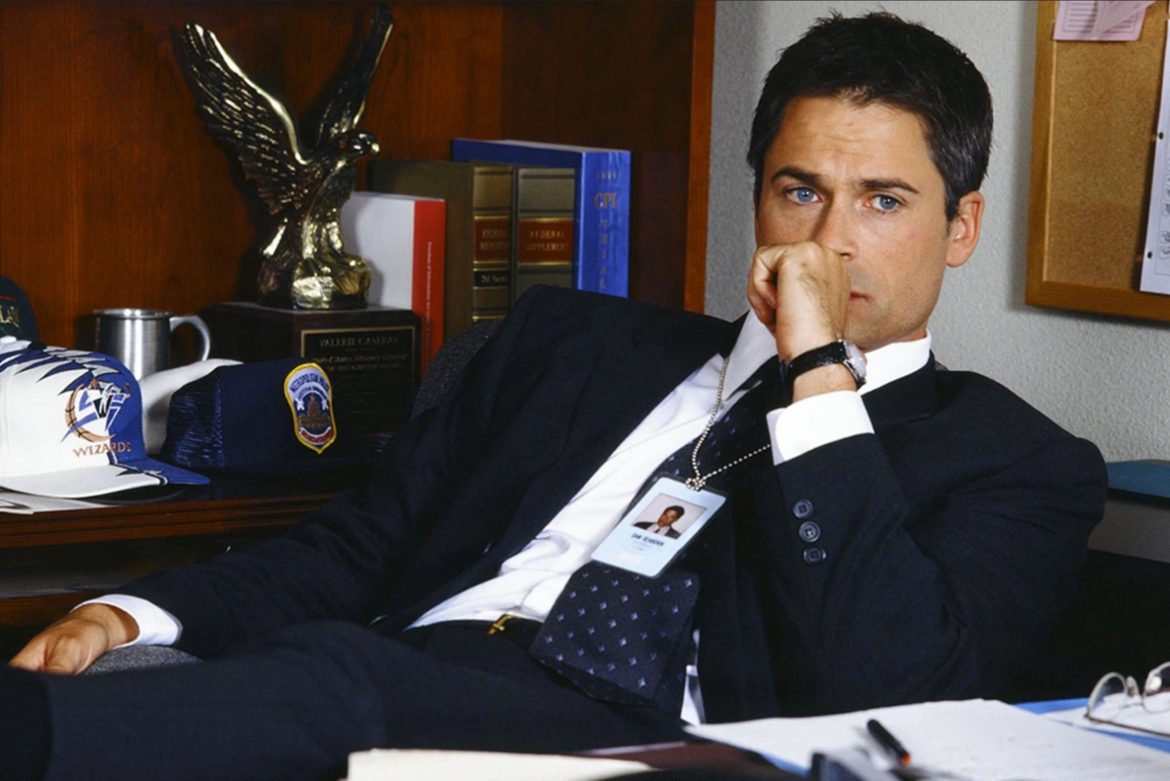
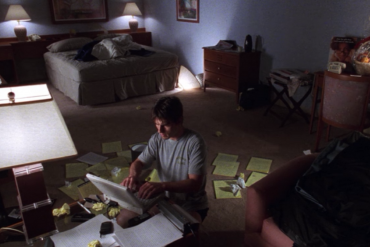
Comments are closed.